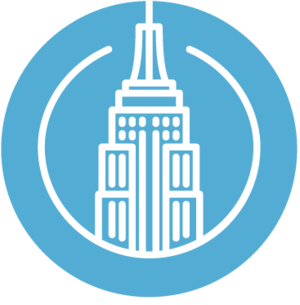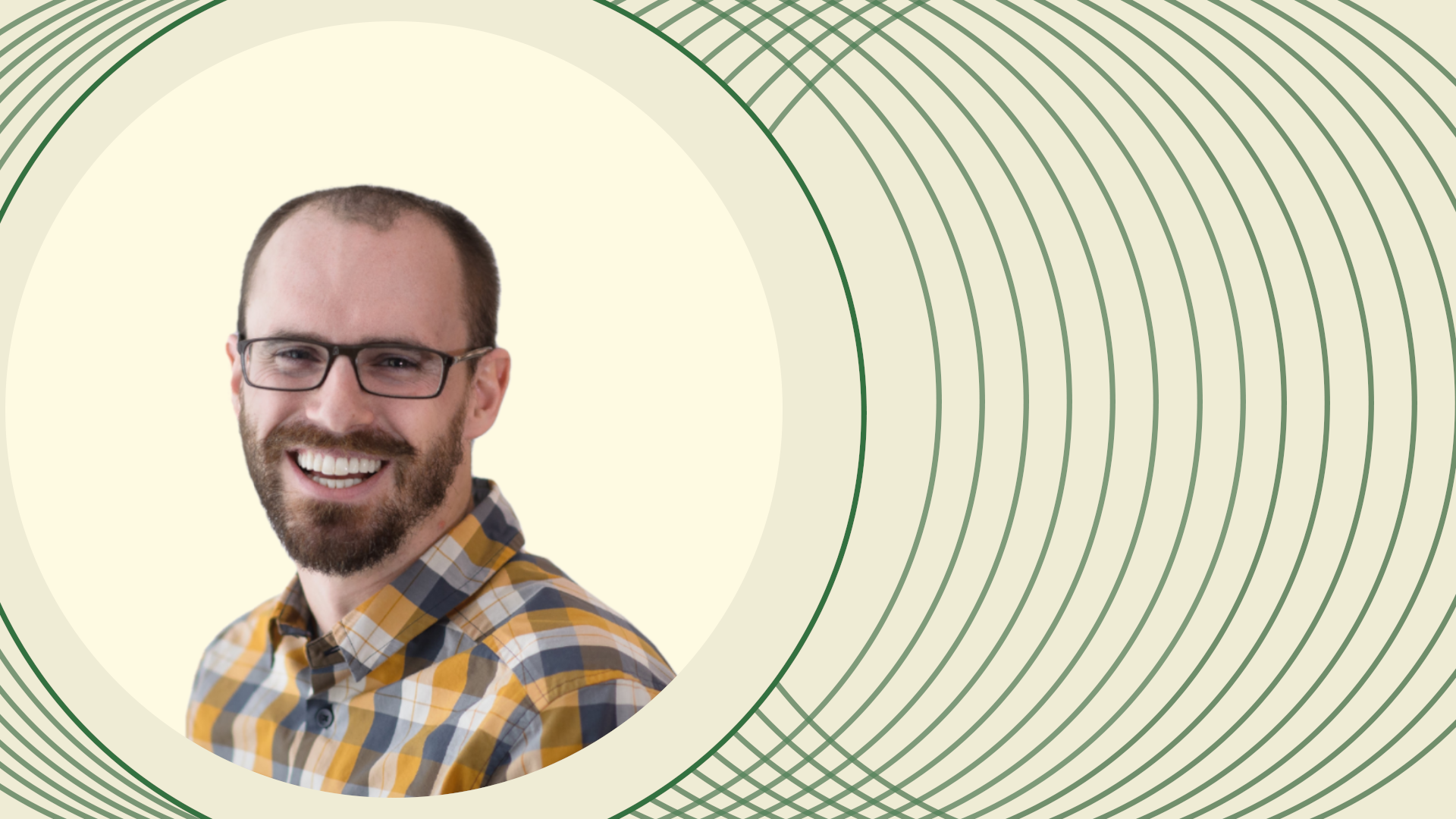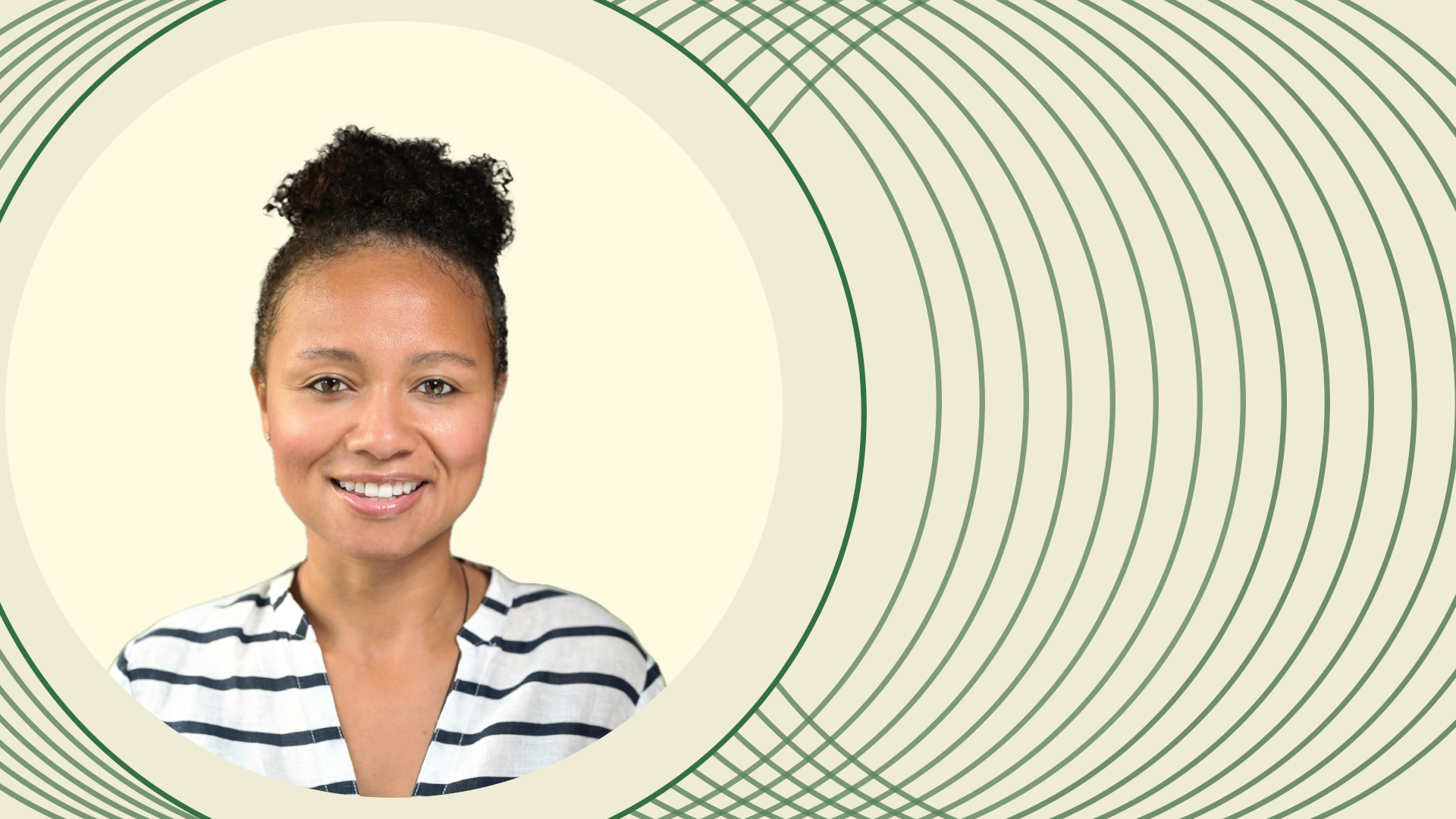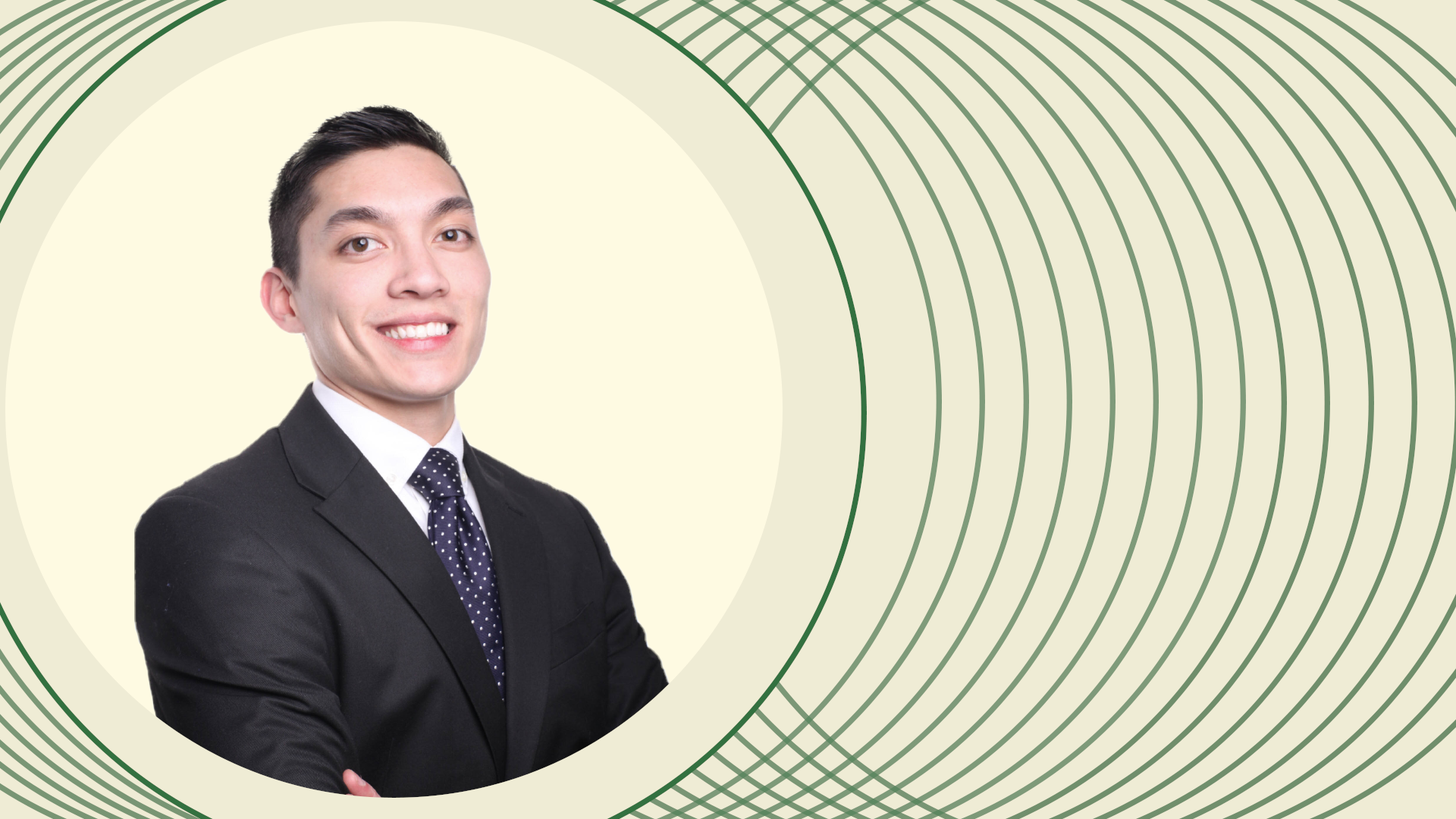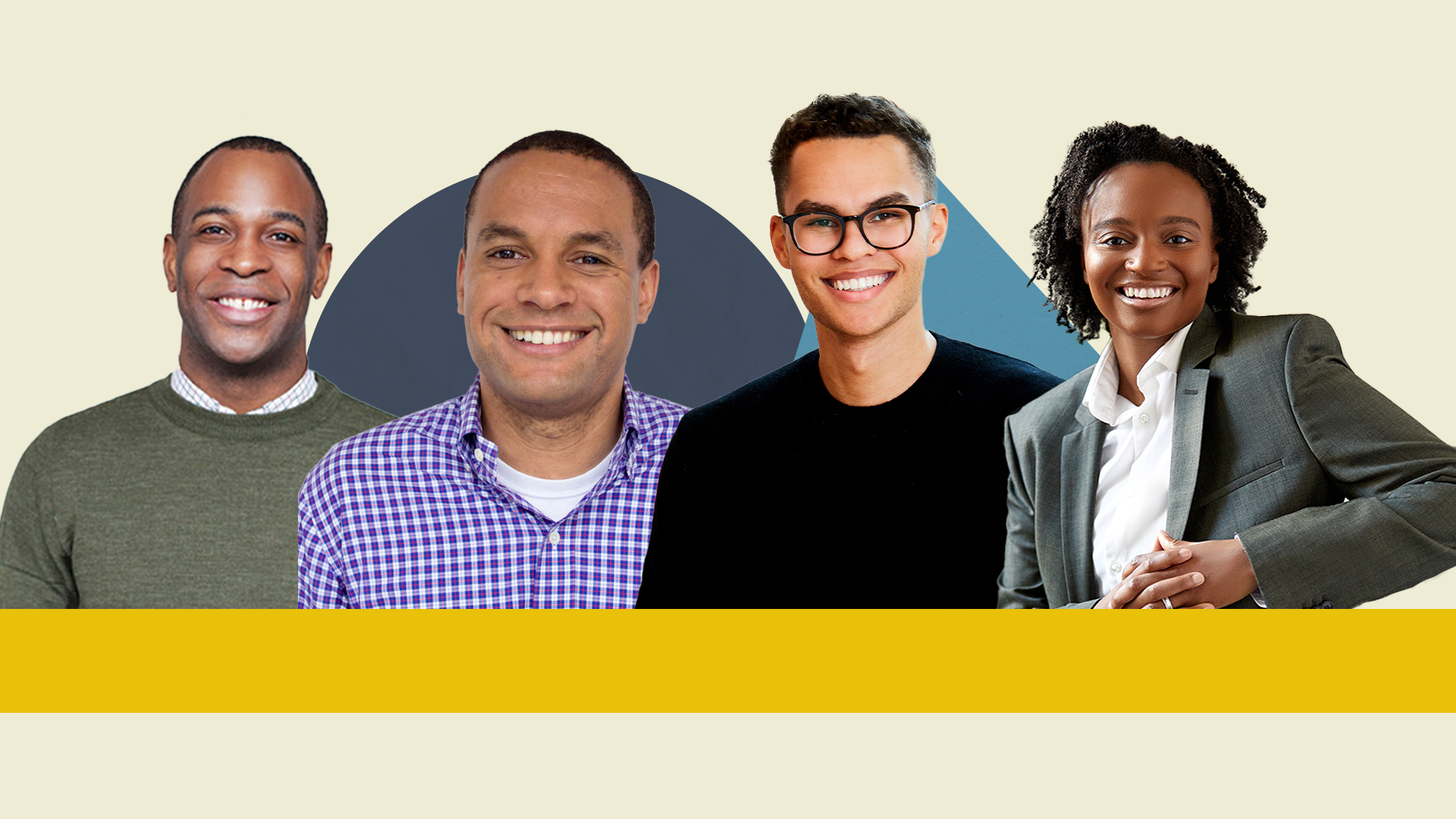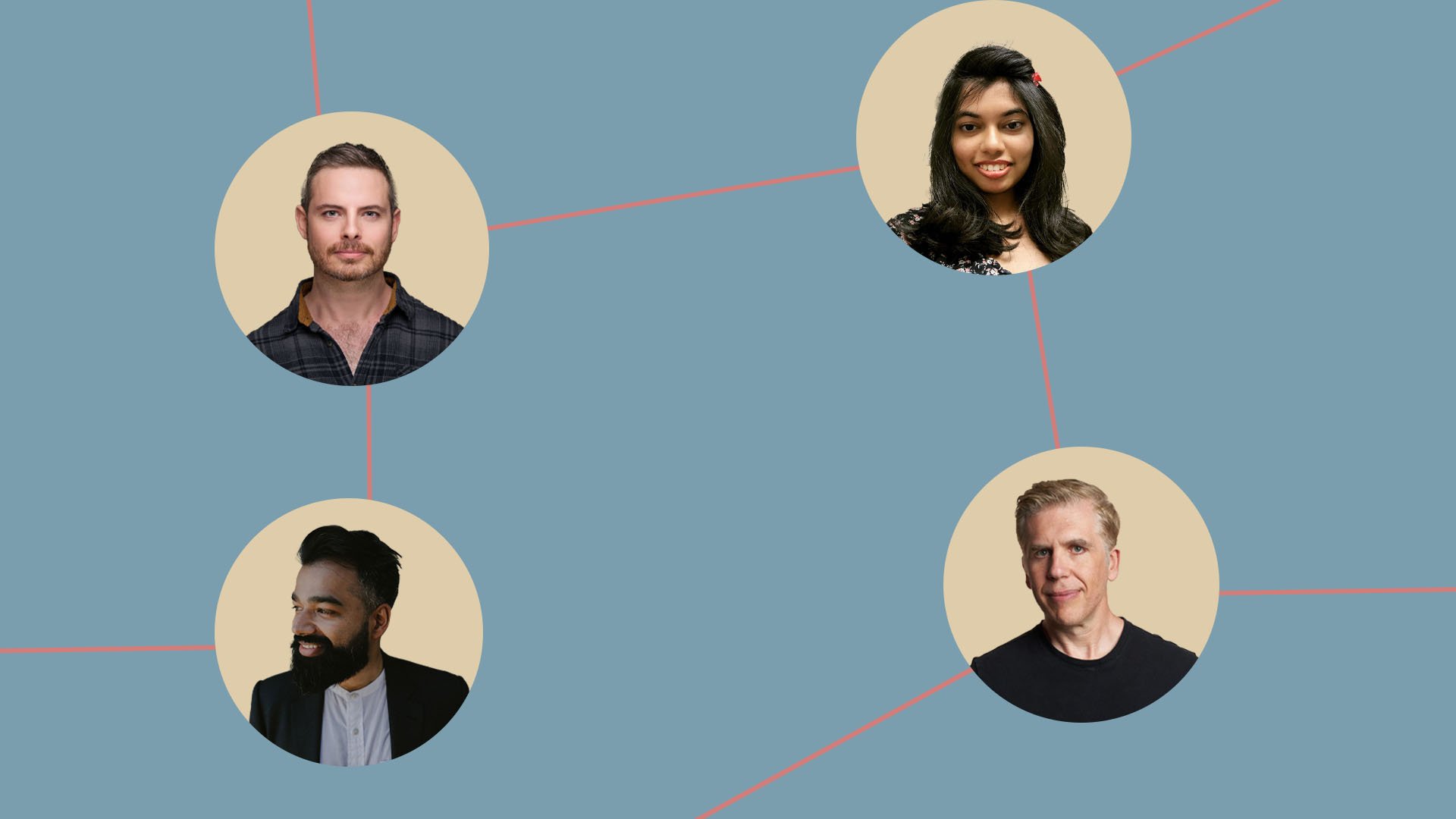Companies to Watch: Five New York Founders at the Forefront of Climate Tech
The risk of climate change is only becoming more urgent, and its impacts are being felt across all types of industries — including tech. It’s no coincidence that tech companies are assembling teams of sustainability experts to reassess their supply chains and decarbonize their operations.
New York is stepping up: At the same time Union Square Ventures gets its new $200 million dedicated climate fund off the ground, the city released an updated PlaNYC agenda to chart its strategy to building a homegrown green economy. That includes a first-of-its-kind $20 million biotech hub for climate-focused startups, as well as Yard Labs, the Brooklyn Navy Yard’s effort to open up a streamlined environment for climate tech companies to test their solutions in real-world settings.
NYC is a unique hotbed of both climate challenges and interventions — that’s why it has quickly become a burgeoning hub for climate tech.
To mark Earth Day, we talked to five NYC founders advancing climate-focused solutions to food, healthcare, real estate, and more. Meet this month’s Companies to Watch:
CABINET HEALTH
What does your company do?
Cabinet Health co-founder and CEO Achal Patel: Cabinet Health is a sustainable healthcare company that invented the world’s first refillable and compostable medicine system to offer an impactful solution to the growing plastic waste crisis. I co-founded the brand with Russel Gong with a vision to reimagine the way the industry packages and fills every type of medicine to eliminate single-use plastic from pharmaceuticals altogether. The system offers high-quality, over-the-counter medicines and supplements in elevated glass bottles that can be infinitely re-used, providing customers with a more beautiful, streamlined, and low-waste alternative to the dozens of plastic pill bottles in their medicine cabinets today.
A question we love to ask every founder: why New York?
AP: New York’s energy is unmatched — in building a company, the creative inspiration, people, and culture around others building companies has been hard to come by in any other city.
You founded Cabinet in 2019, but since then, the healthcare sector has obviously changed a lot due to the pandemic. When healthcare providers and patients were focusing so much on basic needs, did you pivot your roadmap at all?
AP: The pandemic was obviously a tough time for everyone. In searching for solutions, the healthcare industry created more than eight million pounds of plastic waste. Cabinet Health has always been focused on improving sustainability efforts within the industry. Our vision has been steadfast in eliminating single-use plastic from pharmaceuticals by delivering batch-tested and effective medications in beautiful, sustainable, and compostable packaging. We didn’t pivot our roadmap— but it did reinforce the importance of finding sustainable ways forward in the healthcare industry.
Can you say a little more about just how much single-use plastics are an ongoing threat to our environment? What sources are the biggest offenders?
AP: Every year, more than 380 million tons of plastic are created, with consumer packaged goods being one of the largest contributors to the plastic crisis. The medicine industry is also a plastic giant — producing over 190 billion single-use plastic medicine bottles every year, an estimated 97% of which end up in our oceans, landfills, and eventually, our bodies as microplastics. New data shows the average American ingests nearly 5 grams of plastic per week via these microplastics, which is equivalent to eating a credit card! The plastic crisis has also larger implications to the climate as a whole, contributing to climate change, ocean pollution, biodiversity loss, and more.
You raised a new round of funding at the end of last year (congrats!). What can we expect from Cabinet in 2023?
AP: The packaging features the same frosted glass, shattered-resistant bottles that are helping remove plastic from our medical system. The latest bottles are now twice the size, answering customer’s requests for larger bottles, and the compostable refillable bags have increased pill counts. The new offering will help customers save as much as 20% per pill compared to the leading brands. Beyond the rebrand, we’re expanding into retail later this year!
Okay, some rapid-fire questions. First: where do you get your favorite pizza slice?
AP: Two Boots — it's right next to my apartment!
What’s the best place in New York for a coffee or lunch meeting?
AP: I love Freehold in Brooklyn. There’s also lots of great parks nearby to walk around in and meet with people!
What’s the one piece of advice you’d give a peer founder spooked about the 2023 market predictions we’re all reading about?
AP: You can’t control the macro-economic market, but you can control how you react to it. The market has shifted back to valuing fundamentals — profitability, or ability to show a clear pathway to that — and focusing on your products, customers, and distribution will help you be prepared for that. As a founder your most important role is to make sure your company still exists 12-24 months from now, so build a clear financial plan for the coming 24 months and work through scenarios with your team, peers, or a trusted advisor.
What’s one sustainability choice every New Yorkers should make a habit before Earth Month ends?
AP: Small choices matter! Identify one area in your life or room in your home where you can make a mindless swap to opt for more sustainable packaging or ingredients. The little things add up! For example, our Cabinet customers have avoided more than 22,000 lbs of ocean-bound plastic in just 2 years!
DELIVERZERO
What does your company do?
DeliverZero founder and CEO Lauren Sweeney: DeliverZero is a reusable packaging solution that eliminates packaging waste from takeout and delivery. As a neutral network of returnable, reusable food containers that integrates directly with delivery apps and point of sale systems, DeliverZero makes it easy for customers to order their food in truly sustainable packaging that is returned back into our system, reducing emissions and packaging waste.
A question we love to ask every founder: why New York?
LS: We started here because for me, New York is home. When we got started, there was no question about where we’d launch — we had limited resources and wanted to prove out something super novel. We started in Brooklyn because that’s where my co-founder and I both lived at the time. We were in restaurant kitchens six nights a week. We needed to be extremely hands-on in the beginning. That’s how we learned what kind of product restaurants really needed us to build in order for this to scale.
You co-founded DeliverZero at the end of 2019, and of course, just a few months later, the pandemic totally upended how people were sourcing their meals. A major jump in takeout and delivery, right? How did those behavior shifts influence your plans to start building the company?
LS: In the very beginning, we actually shut down for three months, for a few reasons. The first is that I couldn’t confidently email customers and post on Instagram telling them to order from restaurants when I was worried about the delivery workers and the restaurant workers who needed to expose themselves to this unknown virus in order to deliver people their Pad Thai. And if we were going to continue operating, I’d need to be out there too — I didn’t want to expose myself or my family. A lot of the restaurants we worked with temporarily closed in the beginning.
And I’ll just address the elephant in the room: reuse is safe, even from a COVID perspective, but we didn’t know that at the time. We didn’t know anything about the virus. So we shut the business down, and I spent a whole day crying and putting up a Squarespace site as a placeholder.
Soon after we relaunched in summer of 2020, we went from zero restaurants in Manhattan and about 30 restaurants in Brooklyn to over 150 restaurants really quickly. The story we kept hearing over and over again was that the pandemic made people more aware of how much waste is created by delivery orders. People were trapped at home with all of their garbage, and more of it came from takeout and delivery than usual because it took awhile for dine-in to come back.
The pandemic didn’t really influence my own personal conviction that this company needed to be built, but it did help more customers see the need more acutely.
Does NYC have any packaging regulations in place already? Do we have good data on how big the problem is in the city?
LS: Packaging regulations in New York and across the United States are still pretty limited. Styrofoam bans, plastic bag bans, and “Skip the Stuff” ordinances that mandate utensils, condiments, and napkins by request only are becoming the norm. All of those bills are necessary, but they just begin to make a dent in the single-use packaging problem. What will really move the needle are state-level EPR bills, which should include ambitious reuse and refill targets, and the Choose to Reuse bill, which would mandate that corporate-owned fast casual restaurants offer a returnable reusable option at all points of sale.
What about the restaurant angle? What proof points do you communicate to restaurants for why they should enroll and offer reusable containers?
LS: We lead with the financial benefits. Using our containers costs restaurants less than they pay for single-use packaging, and they receive orders from customers who would not have otherwise ordered. Restaurants that work with us save an average of 40% on packaging costs, and 86% of our customers order from a restaurant they had never tried before because of DeliverZero.
Of course, the urgency of the climate crisis is the entire reason we’re doing all of this. Most restaurants we walk into understand that reuse is inherently more sustainable than single-use by every measure, but if they’re interested in learning more, our whole team is passionate about this issue. Everyone on our team is able to answer questions on how our solution is more sustainable than other, very expensive options that have been marketed to restaurants as “sustainable,” like bioplastics and compostables. (By the way: There is a lot of misinformation out there about compostables, which are super resource-intensive to produce, and then they are typically not even composted. They end up in landfill, where they emit methane. Methane is 80 times more potent than CO2 during the first 20 years of its lifetime.)
Okay, some rapid-fire questions. First: where do you get your favorite pizza slice?
LS: L’Industrie.
What’s the best place in New York for a coffee or lunch meeting?
LS: I like Daily Provisions for both because they use real mugs when you have your coffee to stay and they’re conveniently located. I also like St. Jardim in the West Village when that’s convenient.
What’s the one piece of advice you’d give a peer founder spooked about the 2023 market predictions we’re all reading about?
LS: Listen to everyone who tells you to focus on a path to profitability. The fairy tale days are over: only real companies get to survive now.
What’s one sustainability choice every New Yorkers should make a habit before Earth Month ends?
LS: Order in DeliverZero containers on Uber Eats and DoorDash, obviously. But also: stop using single-use coffee cups. Not just because it’s dumb to extract materials from the earth just to use them for the 20 minutes it takes to eat lunch or drink coffee, but because once you get used to not eating or drinking from soon-to-be-garbage, it’s very hard to go back.
RENOVATE ROBOTICS
What does your company do?
Renovate Robotics co-founder and CEO Andy Stulc: Renovate is automating the installation of shingles and solar panels on roofs.
A question we love to ask every founder: why New York?
AS: A long answer here, but New York really chose us, rather than the other way around:
I’m from the Pacific Northwest, and I actually founded the company in Seattle and was planning to build the business out there. But I got connected with the team at SOSV in early 2022. They have a program called HAX that invests in early stage hardware and deep tech startups. For a long time that program has operated out of Shenzhen, China, but during the pandemic, they decided to open a new US location. They settled on Newark, NJ for a variety of reasons, including support from the state of New Jersey, access to industrial and manufacturing space, and proximity to the VC and financial networks in NYC.
I was very impressed with the team at SOSV, so when they made an offer to invest, I packed up my things and moved to NJ, and it’s been a great decision. They have provided space, tools, mentorship, and networking opportunities that have helped us make a ton of progress.
I was only planning to be out here for a few months, but I’ve made some really good connections here that make it the obvious location to keep working from. I found cofounder, Dylan Crow, who actually left the investment team at SOSV to join Renovate as COO. In addition to SOSV/HAX, we’ve also received a lot of support from two other NYC based investors, Newlab and AlleyCorp. We’re forming great relationships with local roofing contractors and manufacturers. And we’ve been able to hire great people as well!
We’re committed to doing what’s best for the business, and right now New York is delivering! We’re officially transitioning out of the HAX space and into our own office in the Brooklyn Navy Yard. And I’m personally in the process of moving to Red Hook. So we’re excited to be here and are planning to be around for a while.
Why is Renovate focused on roofs as a way to tackle changes in climate conditions?
AS: Roofs sit at a unique intersection of climate mitigation, climate adaptation, and labor shortages in construction.
For mitigation, roofing is very much a weather-driven industry. Climate change is causing more frequent and more severe storms, and those are leading to higher levels of roof damage and deterioration. This is driving up demand for roofing installations. For adaptation, we are focused on installation of rooftop solar. We’ve studied the numbers and as households adopt electric vehicles and HVAC, their total electricity consumption doubles. As these get adopted at a larger scale, the next question we ask is where does all that extra electricity come from? The best option is to install clean energy at the point of use — solar panels on the roof. There are 80 million houses in the US, and only about 3 million have solar installed right now, so this is a huge opportunity!
At this point, the challenge is keeping up with roofing demand while also installing these solar products at scale. The tough truth is that roofing/solar installation is an incredibly dangerous, physically demanding job, and contractors already cannot hire enough laborers to keep with demand. This is where our robots come in: They are a tool that help contractors work safer and more efficiently so that they can get more projects done with the workers they do employ.
So we’re excited about roofing because of both the mitigation and adaptation sides. And we’re excited about robotics, because it lets us address the current bottleneck.
What would you say to a homeowner (or a roofing contractor) who may be still weighing the cost-benefit analysis of solar installation?
AS: The easiest (and cheapest) time to install solar is when you’re already replacing your roof. So if you are coming up on that work, be sure to check out tax incentives from all levels of government, plus financing options that might be available. It definitely is a big cost up front, but if you do it right, you can cut your electricity bill (and gasoline bill) to zero. I’d also recommend looking at products like the GAF Timberline solar shingle. It installs faster and easier than traditional panels, so will save extra money.
For contractors, I think it’s clear that the roofing installation and solar installation are becoming hand-in-hand, so I’d recommend jumping right in.
Are we going to see robots laying new solar panels all over NYC buildings? How challenging does the city’s density and construction complexity make adoption here, versus, say, a home upstate?
AS: We actually are primarily focused on residential single-family homes, so it will probably be a while before you see us all over NYC. But we are excited about places like Long Island, the New Jersey suburbs, and upstate. And we’re also making connections with contractors all over the country. Our first robot addresses sloped roof installations. Most of NYC is flat roof products, so you’ll have to wait until we expand to more offerings.
Last month, you announced a $2.5 million pre-seed round. How are you planning to use the capital? What’s on our roadmap for the rest of 2023?
AS: We have three big milestones to hit this year. First we are validating the accuracy and reliability of the robot at our office in the Brooklyn Navy Yard. We have a 500 square foot sloped test roof in our space where we will work out any kinks.
After that, we will move to outdoor test roofs. This is where we will test at height and in real world conditions. We’re working with some partners to serve as external validators for the technology.
Once those outdoor tests are complete, we will begin pilot projects with roofing contractors. We will operate as a subcontractor, show up on site with our team of engineers and technicians and install some roofs!
Is automation coming to take on more of the construction industry? Where do you hope to see robotics further applied?
AS: I think automation will continue to expand. Across the whole industry there are labor shortages and productivity issues. But it takes a lot of hard work to figure out the right product and business model that can fit in on the current construction site. We’ve learned a lot from watching companies like Dusty Robotics and Canvas who are a few years ahead of us, and are always excited to talk to people working in the industry.
One thing that I think about often, is that today’s construction materials are really designed for human installation. I get excited about collaborating with material manufacturers to design the next generation of robotics and materials in tandem to unlock systems that are faster, easier, and higher quality to build and maintain.
Okay, some rapid-fire questions. First: where do you get your favorite pizza slice?
AS: I honestly haven’t gotten out enough yet to have a favorite. Whatever slice is closest!
What’s the one piece of advice you’d give a peer founder spooked about the 2023 market predictions we’re all reading about?
AS: My advice is to continually talk to customers and investors and take them along on the development journey with you. I think some founders have a tendency to want to polish everything before presenting to anyone. But what worked well for us with both investors and customers is showing things early, hearing their feedback, and then demonstrating progress. It took us about 6 months from our first conversations with investors until we closed the round, and it was hard work! Over that time, we showed a ton of progress and the investors got to see how we worked.
What’s one sustainability choice every New Yorkers should make a habit before Earth Month ends?
AS: I’m a big fan of bike commuting!
RE-NUBLE
What does your company do?
Re-Nuble founder and CEO Tinia Pina: Re-Nuble is a MWBE-certified NYC climate tech company that uniquely converts food waste and crop residue into a platform of sustainable technologies that return to growers for 100% closed loop agriculture.
A question we love to ask every founder: why New York?
TP: I am originally from the “DMV” — DC/Maryland/Virginia — but I moved to New York literally a day after graduating from Virginia Tech. I’ve always had my eyes set on NYC because it introduced possibilities: Possibilities to change careers easily if my first career straight out of college wasn’t a good fit. Possibilities to meet “the one”. Possibilities to discover new things faster than I would have been introduced to elsewhere. Sometimes it can still be overwhelming after living here 16 years, but if you learn how to manage the energy of NYC along with all of its ‘what ifs,” you can effectively learn how to manage a startup.
It’s not hard to imagine there’s a lot of food waste in NYC, but after Re-Nuble transforms that waste into nutrients, are there enough indoor growers locally to take those nutrients back? What do “indoor farms” in NYC look like, or what types of communities is Re-Nuble working with outside of the city?
TP: Even though we’re headquartered here in NYC, working out of Newlab in Brooklyn, we actually manufacture close to six hours north near Rochester. Upstate New York has a rich agricultural ecosystem that doesn’t limit us to controlled environment agriculture or “indoor growers” which is a fairly small, niche market. We are also able to serve traditional open-field growers and consumer gardeners around the country. We're essentially a B2B2C business.
Just this week Mayor Eric Adams announced a plan to reduce the city’s food-based greenhouse gas emissions by 2030. He says a lot of those emissions are attributed to meat production and consumption, but what other goals should city government be focusing on to help on this?
TP: I would love to see the city commit to creating manufacturing hubs whereby waste materials — textile scraps, construction materials, food waste, things like that — can be upcycled into commodities that replace common synthetic goods. I know the the city’s Economic Development Corporation has this framework in mind, but it may need more collaborative support from the business community to make this happen. I’m more than happy to commit to this because I see it as a driving force to create more service-based and manufacturing jobs that are eroding due the fast pace of innovative tech solutions. There are markets to sell to. The challenge has always been managing the logistics to source and redirect these waste streams within close proximity of end markets.
At the end of last year, Re-Nuble won $4.6 million in funding from the USDA to help farms integrate climate-focused tools into their operations. How is that going to help execute on your roadmap for 2023?
TP: This funding is to support a three-year program serving an initial four farms, but I’m proud to say that we were able to budget in and expand this to two additional farms. The goal is to help these farms which are located throughout the East Coast and the Midwest to adopt regenerative agriculture practices using our approach, thereby producing climate-smart commodities — produce and other agricultural good — that can be sold to the market, ideally at a premium, due to their positive benefits in reducing greenhouse gases. This allows us to validate our unique offerings to farms of all sizes that are growing specialty crops, livestock, and grains.
Okay, some rapid-fire questions. First: where do you get your favorite pizza slice?
TP: Easy. Double Zero in the East Village for their vegan cheese that doesn’t taste quite so vegan.
What’s the best place in New York for a coffee or lunch meeting?
TP: The Coffee Project truly knows what good coffee shop music and vibes are, while delivering exceptional service.
What’s the one piece of advice you’d give a peer founder spooked about the 2023 market predictions we’re all reading about?
TP: To stay positive and hopeful, but also incredibly prudent with money and time. Optimize for optionality. Scarcity has always made me creative and I truly believe that superpower is what earned us the runway that most people probably wouldn’t have created for themselves if they had more money. It’s also important to make sure that you’re being incredibly transparent with your team, and work to gain their perspectives on how to operate lean while showing a clear path to weather the storm and or help your company reach a new milestone.
What’s one sustainability choice every New Yorkers should make a habit before Earth Month ends?
TP: Buy less. Again, with scarcity, creativity is born. Buying less will allow you to focus on using all of what remains in your pantry and your wardrobe and less of what is in your wallet. “Conscious consumption” allows me to focus on finding local businesses to support that can provide direct replacements for less sustainable goods and maximize my time with family and friends.
PHOOD
What does your company do?
Phood co-founder and CEO Luc Dang: Phood is a food waste prevention company that uses computer vision and powerful data processing to automate surplus food tracking for retail grocers and other prepared food operations. We automate the process to enhance the task, and deliver data that helps our customers experience higher margins, smarter production schedules, and impact that goes far beyond the bottom line. (Think triple bottom line – people, profit, planet.)
A question we love to ask every founder: why New York?
LD: There’s nothing like the energy that comes from being in such a lively city. I’m always within reach of inspiration, and surrounded by smart, ambitious people. Our team is remote, so I always have the option to travel, or live somewhere less expensive, but something about the city has me stuck. I love it here.
You were working on a corporate finance career before founding Phood. What made you want to jump into a founder role — tackling a problem as big as food waste no less?
LD: I’ve always thought a little bit bigger than a 9-5 allows, so to start off, I wasn’t completely happy on the finance path. It makes sense when you graduate from college because it’s kind of what you’re nudged to do. One day when I was at work in that role, I saw a newspaper and the headline read something crazy like “40% of our food supply goes to waste.” Growing up on a farm, quite close to the food supply, I though, ‘how can that be?’ I started doing some research and after a few weeks of being really hung up, I felt like I had to do something about it. I made some calls, came up with a hypothesis that if organizations had better tracking tools, they’d be more capable of better management, and so Phood was born. A couple friends from college helped me launch the tech, and the rest is history.
Where does most food waste come from? Personal households or restaurants or other businesses? How is Phood tracking those pipelines?
LD: Technically speaking, it’s the consumer, but we’re often products of the systems in which we engage, so it’s definitely bigger than just being a people problem. Phood works with “consumer-facing food businesses” as a lot of the data qualifies them — think grocery stores and large-scale food service operations.Restaurants are part of that, but given their operations, not a good fit for our product as it stands. We work primarily with prepared foods, and are looking to expand into more raw foods next. Homes and restaurants aren’t on the docket for us right now.
For some smart innovation in fighting restaurant surplus, check out Too Good To Go. On the consumer side, I think it’s about increasing choice and awareness. Movements like upcycled food are exciting, as are the pushes to embrace imperfect produce and build composting infrastructure on a local level.
AI is having a big moment right now, as you know. But you were using AI and computer vision tools well before now. Do you think it will become as ubiquitous as some founders and investors predict?
LD: I’m not sure. I’ve found that AI is a really broad term that people use to buzz more than describe. I think the key to AI development, and our product specifically, is quality data. As modes to collect and process data grow, as they have in the past few years, so will the prevalence of their applications. I don’t know that rushing that is a good idea, or where it’s all going to be candid. But I’m excited to see more, and I’m hopeful that it’s genuinely productive as opposed to harmful for society. Policy matters when we talk about ubiquity as well. That’s a whole other rabbit hole.
Okay, some rapid-fire questions. First: where do you get your favorite pizza slice?
LD: It’s so hard to to pick just one, but not Joe’s (I know that’s controversial).
What’s the best place in New York for a coffee or lunch meeting?
LD: I love Little Ruby’s. It’s a great spot to brainstorm and get some work done whether you want a coffee or lunch. I frequent the location in East Village.
What’s the one piece of advice you’d give a peer founder spooked about the 2023 market predictions we’re all reading about?
LD: Find a problem and help folks solve it. Stay in touch with what’s going on in the real world. Thankfully there’s money for just about anything, especially for climate and society-related causes.
What’s one sustainability choice every New Yorkers should make a habit before Earth Month ends?
LD: Clean out your fridge! It’s amazing what can get lost in there, and how much builds up when we neglect this simple, weekly task. Find fun ways to use your leftovers and just make it a point to be more aware of what comes in and out of your place.
